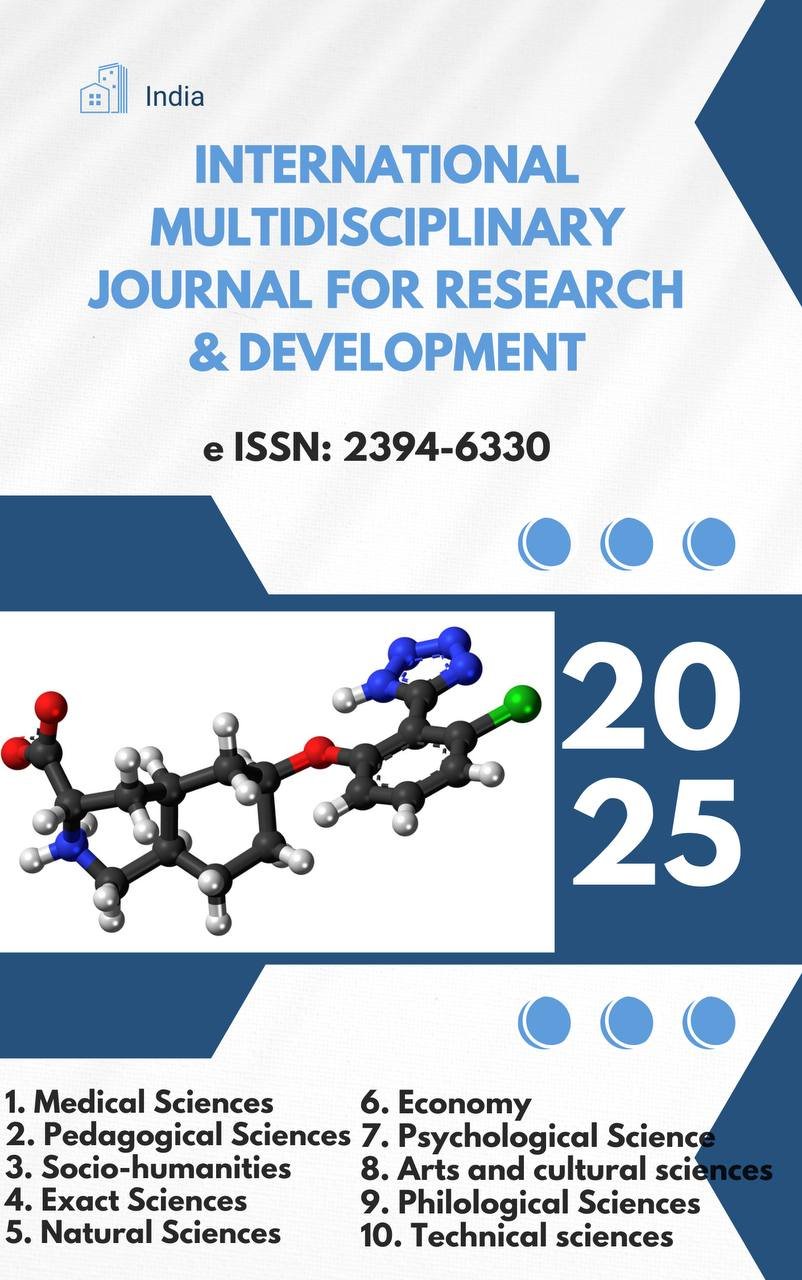AUTOMATED OPINION-GIVING MODELS

Abstract
This article theoretically analyzes automated models of the feedback process and highlights their potential applications in education, production, and business. Automated feedback systems reduce the human factor and provide fast and accurate analysis. The study presents existing technologies, algorithmic approaches, and recommendations for their practical application .
Keywords
feedback, automated model, artificial intelligence, data analysis, educational technologies.
References
- Shute, VJ (2008). Focus on Formative Feedback. Review of Educational Research , 78(1), 153–189.
- https://doi.org/10.3102/0034654307313795
- Nicol, DJ, Thomson, A., & Breslin, C. (2014). Rethinking Feedback Practices in Higher Education: A Peer Review Perspective. Assessment & Evaluation in Higher Education , 39(1), 102–122.
- https://doi.org/10.1080/02602938.2013.795518
- Wang, Y., & Heffernan, N. (2013). The "Assistance" Model: Leveraging Machine Learning to Provide Adaptive Feedback. International Journal of Artificial Intelligence in Education , 23(4), 475–491.
- https://doi.org/10.1007/s40593-013-0014-x
- Turner, A., & De Raadt, M. (2013). Automated Feedback for Programming Assignments. Computer Science Education , 23(4), 313–337.
- https://doi.org/10.1080/08993408.2013.846777
- Lee, J., & Lee, J. (2015). IoT-Based Real-Time Monitoring and Feedback System for Manufacturing Processes. Journal of Manufacturing Systems , 37, 110–120.
- https://doi.org/10.1016/j.jmsy.2015.06.004
- Boude, D., & Molloy, E. (2013). Rethinking Models of Feedback for Learning: The Challenge of Design. Assessment & Evaluation in Higher Education , 38(6), 698–712.
- https://doi.org/10.1080/02602938.2012.691462
- Vaswani, A., Shazeer, N., Parmar, N., Uszkoreit, J., Jones, L., Gomez, A. N. , ... & Polosukhin, I. (2017). Attention Is All You Need. Advances in Neural Information Processing Systems , 30, 5998–6008.
- https://arxiv.org/abs/1706.03762
- Devlin, J., Chang, M.-W., Lee, K., & Toutanova, K. (2019). BERT: Pre-training of Deep Bidirectional Transformers for Language Understanding. NAACL-HLT .
- https://doi.org/10.18653/v1/N19-1423
- Jurafsky, D., & Martin, JH (2021). Speech and Language Processing (3rd ed. draft).
- https://web.stanford.edu/~jurafsky/slp3/
- Kuhlthau, CC (1991). Inside the Search Process: Information Seeking from the User's Perspective. Journal of the American Society for Information Science , 42(5), 361–371.
- https://doi.org/10.1002/(SICI)1097-4571(199106)42:5<361::AID-ASI6>3.0.CO;2-#
- D'Mello, SK, & Graesser, A. (2012). AutoTutor and Affective AutoTutor: Learning by Talking with Cognitively and Emotionally Intelligent Computers that Talk Back. ACM Transactions on Interactive Intelligent Systems , 2(4), 23.
- https://doi.org/10.1145/2395123.2395129
- Buckingham Shum, S., & Crick, RD (2012). Learning Analytics. Educational Technology & Society , 15(3), 3–26.
- https://www.j-ets.net/ETS/journals/15_3/1.pdf
Downloads
Download data is not yet available.